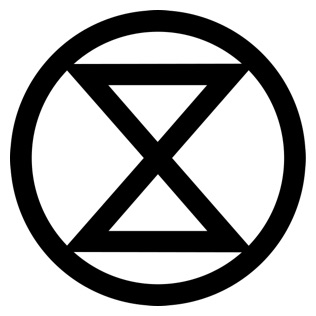Ways to Get Involved


Sunrise Movement
In college, Varshini Prakash became involved in the school's fossil fuel divestment campaign. It was a long process but, ultimately, a successful one. In 2016, University of Massachusetts became the first major public university to divest its endowment from direct holdings in fossil fuels.
But as Prakash continued her climate activism, she grew frustrated with the lack of national movement on these same issues. What, she wondered, would an effective political movement that tackled the climate crisis look like? She soon joined with a handful of other students and activists to help answer this question. They knew they wanted to start an organization founded on collective action, but first they wanted to study and learn from what had and hadn't worked in the past. They studied the civil rights, anti-apartheid and other progressive movements and learned about political organizing from other grassroots groups.
“We studied...how people had achieved the scale of transformation that we needed to solve climate crisis,” Prakash said. “We talked to experts in the field and discussed the successes and failures of the climate movement.”
A year and a half later, they took all that they’d learned and came out with a four-year strategy. They wanted to create a social movement that would not waste time in incrementalism but would address the climate crisis with the urgency and energy it required. The result was the Sunrise Movement, a movement by and for young people, focused on tackling the most essential crises of our time: climate change and inequality.
They have since joined with politicians like AOC to propose a comprehensive plan of their own. It's called the Green New Deal and is meant to harken back to Roosevelt's original New Deal which helped America recover from the ravages of The Great Depression. They believe it will create millions of new jobs and lead the US transition to 100% renewable energy.
And it's working. In a December poll, 81% of registered voters said they either “somewhat support” or “strongly support” the Green New Deal and Sunrise has become an influential climate movement. (If you're old, you can still help by donating money to them.)
Sunrise Movement Website
Transition Towns
The Transition Movement was started in Britain by Rob Hopkins who wanted to create a "roadmap" for building resilient communities that would face the challenges of climate change and economic instability with creativity and innovation. At the heart of his idea was inviting people to imagine a new vision of "the good life", one that focused less on consumption and achievement and more on community and connection. It is a vision of a less frenetic life, but also a less lonely one. Long before the "sharing economy" was coopted by for profit businesses, Hopkins helped to set up such exchanges within towns so that neighbors could meet each other and work together for the public good. Transition towns (any town or city can learn how to become one) are autonomous, evolving places; each one with its own initiatives and goals.
They are decidedly not communes; everyone lives on their own or with their family or friends; what Transition does encourage is communal enterprises that are chosen and started by the townspeople. One town might have a free tool library, another a free garden share, yet another might host clothing swaps or a bike collective or a repair cafe.
Rob Hopkins started the first Transition town in his hometown of Totnes, UK in 2006. There are now more than a thousand worldwide with many more in the early stages.
The Transition Network asks a simple question, but one that stands out in all the swirling gloom and doom.
Transition Town Website
Extinction Rebellion
Extinction Rebellion (also known as “XR”) are an international movement seeking to move away from incrementalism and toward comprehensive systemic changes in how world leaders react to the ecological crisis. One of their key aims is to tell the truth about the seriousness of the climate emergency and in so doing to galvanize ordinary citizens to participate in non-violent direct action. Their aim through protests, civil disobedience and large scale gatherings and matches is to force those in power to move swiftly and urgently to prevent widespread extinctions and societal collapse.
There are many strategies that they employ to this end but the one that has received the most press coverage is the group's decision to block infrastructure and use the mass arrests that result as visually compelling images of civil disobedience to inspire others to join in. The civil rights movement, ACT UP and Gandhi, also used arrests as a way to spread their message in the hopes of jolting governments into taking urgent action on a global scale. It is not necessary to risk arrest if you want to join XR. There are many support roles and outreach roles that carry little or no risk.
XR is a grassroots leaderless network designed to resemble a holacracy, an operating structure used for self-organization. Within the larger organization of Extinction Rebellion are many specialized subgroups such as Doctors for XR, Engineers for XR, and Writers Rebel, among others. Anyone, of any background, is welcome to join XR so long as they adhere to its 10 core principles and values, which include an ironclad commitment to non-violence.
The group was co-founded in 2018 by Gail Bradbrook, a former biochemist and Roger Hallam, a former organic farmer. They studied how social movements of the past had created profound change through non-violent direct action and then tried to apply what they learned. XR's first action was on October 31, 2018, an assembly in London’s Parliament Square which drew upwards of 1500 participants. They continued protests and infrastructure disruptions as the movement grew in number. Within a year, numerous other groups had adopted Extinction Rebellion’s logo and list of demands. XR is now an international movement found in 56 countries.
In the past, Extinction Rebellion has been criticized as not diverse enough as a movement. They have worked to address these criticisms and to work in concert with various frontline community groups. XR's hope is that everyone interested in doing something to address the climate crisis can find a place there. They describe the group as "young, old, black, white, indigenous, of all faiths and none, of all genders and sexualities and none: being alive on earth now is all the qualification required."
Extinction Rebellion Website